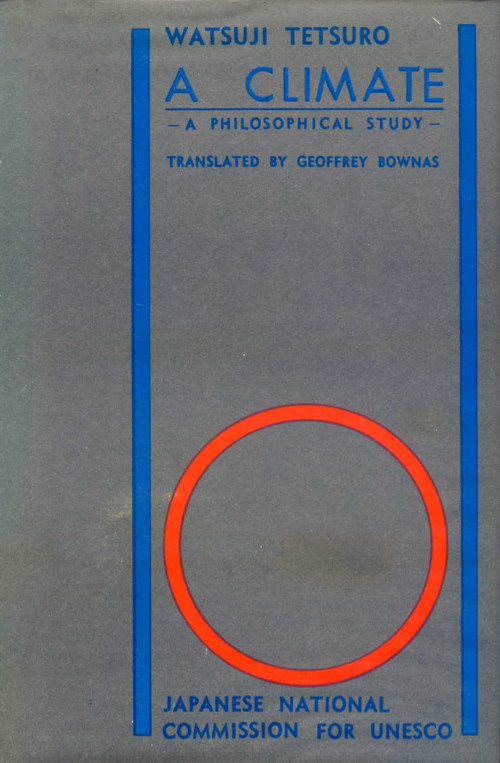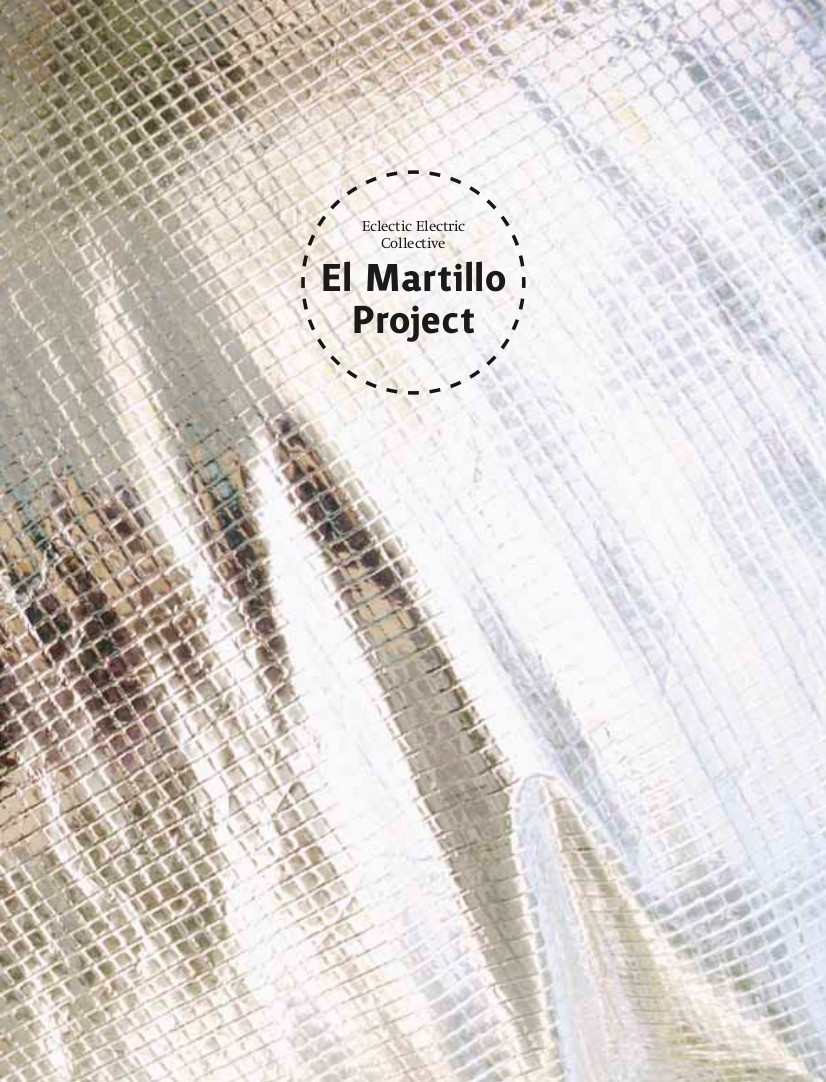Tetsurō Watsuji: A Climate: A Philosophical Study (1935/1961)
Filed under book | Tags: · buddhism, climate, culture, ecology, environment, nature, philosophy, self, space

“In 1927 the Japanese philosopher and cultural and intellectual historian Tetsurō Watsuji went to Germany and returned the next year much influenced by the philosophy of Martin Heidegger. Watsuji could not agree with Heidegger’s theories about human existence, so he wrote a book named Fūdo, published in English as A Climate: A Philosophical Study (reprinted as Climate and Culture: A Philosophical Study). Watsuji explained Fūdo as ‘the natural environment of a given land’. Watsuji thought that Heidegger placed too much influence on the individual and overlooked the importance of social and geographical factors that affect the individual.
Heidegger’s emphasis on the individual was an outcome of centuries of European thought. Descartes said, ‘cogito, ergo sum’, (I think, therefore I am). Watsuji, however, saw the human being as a product of a ‘climate’ including not only natural surroundings but also the social environment of family, society and history. For example, Watsuji explains that ‘cold’ is not a specific temperature, but also the sensation of ‘cold’ which we actually experience in our daily lives. In other words, is the feeling of ‘cold’ a subjective, conscious feeling? Or does the feeling of ‘cold’ come from the independent existence of ‘cold’? Watsuji says that neither is a satisfactory answer because both explanations make a distinction between subject and object, or human and nature. A human being recognizes coldness before any division is made between ‘subjective’ and ‘objective’. For Watsuji, the relationship between a human and his environment, called aidagara, already exists before any other concepts are understood. This idea is similar to the “pure experience” of Nishida Kitaro.
Watsuji’s philosophical uniqueness is the explanation of human existence, aidagara, in terms of social and geographical phenomena. French scholar Augustin Berque was influenced by Watsuji’s way of thought and understood that Watsuji does not regard nature and nature-human as dual existences. Berque suggests the term trajet to include the subject simultaneously with object, nature with artificiality. In French the term trajet usually means distance of travel, or route. Berque sought to change the fixed meaning of subject and object, nature and culture, individual and society, to include the possibility of inter-changeable relationships.” (from New World Encyclopedia)
The book was reprinted under the title Climate and Culture: A Philosophical Study by Greenwood Press, 1961.
Originally published as Fūdo (風土 人間学的考察), 1935
Translated by Geoffrey Bownas
Publisher Printing Bureau, Japanese Government, 1961
235 pages
via golittlebook
Watsuji at Stanford Encyclopedia of Philosophy
Comment (0)Paul N. Edwards: A Vast Machine: Computer Models, Climate Data, and the Politics of Global Warming (2010)
Filed under book | Tags: · climate, climate crisis, computing, data, global warming, meteorology, politics, science, weather

“Global warming skeptics often fall back on the argument that the scientific case for global warming is all model predictions, nothing but simulation; they warn us that we need to wait for real data, “sound science.” In A Vast Machine Paul Edwards has news for these doubters: without models, there are no data. Today, no collection of signals or observations–even from satellites, which can “see” the whole planet with a single instrument–becomes global in time and space without passing through a series of data models. Everything we know about the world’s climate we know through models. Edwards offers an engaging and innovative history of how scientists learned to understand the atmosphere–to measure it, trace its past, and model its future.
Edwards argues that all our knowledge about climate change comes from three kinds of computer models: simulation models of weather and climate; reanalysis models, which recreate climate history from historical weather data; and data models, used to combine and adjust measurements from many different sources. Meteorology creates knowledge through an infrastructure (weather stations and other data platforms) that covers the whole world, making global data. This infrastructure generates information so vast in quantity and so diverse in quality and form that it can be understood only by computer analysis–making data global. Edwards describes the science behind the scientific consensus on climate change, arguing that over the years data and models have converged to create a stable, reliable, and trustworthy basis for the reality of global warming.”
Publisher MIT Press, 2010
Infrastructures Series
ISBN 0262013924, 9780262013925
xxvii+518 pages
Reviews: Noel Castree (American Scientist, 2010), Ronald E. Doel (American Historical Review, 2011), Myles Allen (Nature, 2010), Richard C.J. Somerville (Science, 2011), Gabriele Gramelsberger (Minerva, 2012), McKenzie Wark (White Review, 2014).
PDF, PDF (updated on 2018-11-4)
Companion website (added on 2018-11-4)
Eclectic Electric Collective: The El Martillo Project (2012)
Filed under book | Tags: · activism, art, climate, climate crisis, protest

“In 2009 an inconspicuous looking suitcase was sent from Berlin to Mexico City containing a 39-foot tall inflatable silver hammer. Thus began El Martillo’s odyssey to protest the United Nations Climate Conference in Cancún. El Martillo’s short, but glorious life, climaxed when protesters from Marea Creciente (Rising Tide) stormed the conference complex fences, gigantic hammer above their heads. In full view of the press Mexican police tore the inflatable to pieces. Within an hour global the media corporations declared El Martillo a symbol of the climate changes protests as it’s image traveled across the world.
The El Martillo Project documents the whole process from its conception and construction to the media flurry it sparked off. Included are numerous full color images and documentation of the project; texts and analysis by David Graeber, Alex Dunst, and Cristian Guerrero; an interview with John Jordan from the Laboratory of Insurrectionary Imagination; and a fold out technical manual and plan for creating giant inflatable hammers.
Initially inspired by the quote “Art is not a mirror held up to reality, but a hammer with which to shape it,” The El Martillo Project aims to inspire creative action and joyful disobedience.”
Publisher Minor Compositions, an imprint of Autonomedia, 2012
Creative Commons BY-NC-SA 3.0 Unported License
ISBN 9781570272509
64 pages
PDF, PDF (updated on 2021-8-13)
Comment (0)
